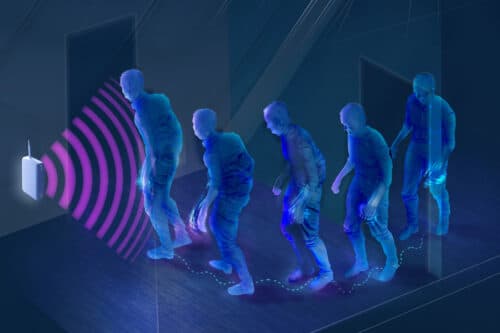Researchers from MIT have developed an in-home device that uses radio signals to continuously monitor a patient’s gait speed to assess the severity of Parkinson’s disease and its progression

The conventional method to evaluate patients with Parkinson’s involves testing their motor and cognitive functions by clinicians, there are semisubjective measurements that are affected by outside factors. Most patients with Parkinson’s are left untreated by neurologists or Parkinson’s specialists since the patients get tired due to the time consumed by traveling to the clinic. To overcome these problems, researchers have developed a device that can be used at home to monitor a patient’s movement and gait speed, which can be used to evaluate Parkinson’s severity, the progression of the disease, and the patient’s response to medication.
“By being able to have a device in the home that can monitor a patient and tell the doctor remotely about the progression of the disease, and the patient’s medication response so they can attend to the patient even if the patient can’t come to the clinic — now they have real, reliable information — that goes a long way toward improving equity and access,” says senior author Dina Katabi, the Thuan and Nicole Pham Professor in the Department of Electrical Engineering and Computer Science (EECS), and a principal investigator in the Computer Science and Artificial Intelligence Laboratory (CSAIL) and the MIT Jameel Clinic.
The device, which is about the size of a Wi-Fi router, utilizes a wireless device previously developed in the Katabi lab that analyzes radio signals that bounce off an individual’s body as they move around their home. This device requires low power that is similar to a tiny fraction of the power of a Wi-Fi router to operate and it does not interfere with other wireless devices at home. The signals pass through walls and other objects but reflect off humans due to the water in our bodies. The length of time taken to reflect provides information on how the person is moving. It involves a machine learning classifier that can select precise radio signals reflected off the patient even if other people are moving around the room. The device runs continuously in the background, hence, providing a large amount of data which requires machine learning to gain insights about the disease over time. The patient does not need to wear a gadget or change their behavior
This approach was tested with 50 participants and conducted a one-year study of in-home gait measurements. This provided with a collection of more than 200,000 individual measurements that they averaged to smooth out variability due to the conditions irrelevant to the disease. They implemented a statistical method to examine data and found that in-home gait speed can effectively track Parkinson’s disease progression and severity. For instance, they showed that gait speed declined almost twice as fast for individuals with Parkinson’s, compared to those without.
This research will prove useful for in-house monitoring of other neurological disorders, such as Alzheimer’s, ALS, and Huntington’s.
Click here for the Published Research Paper








